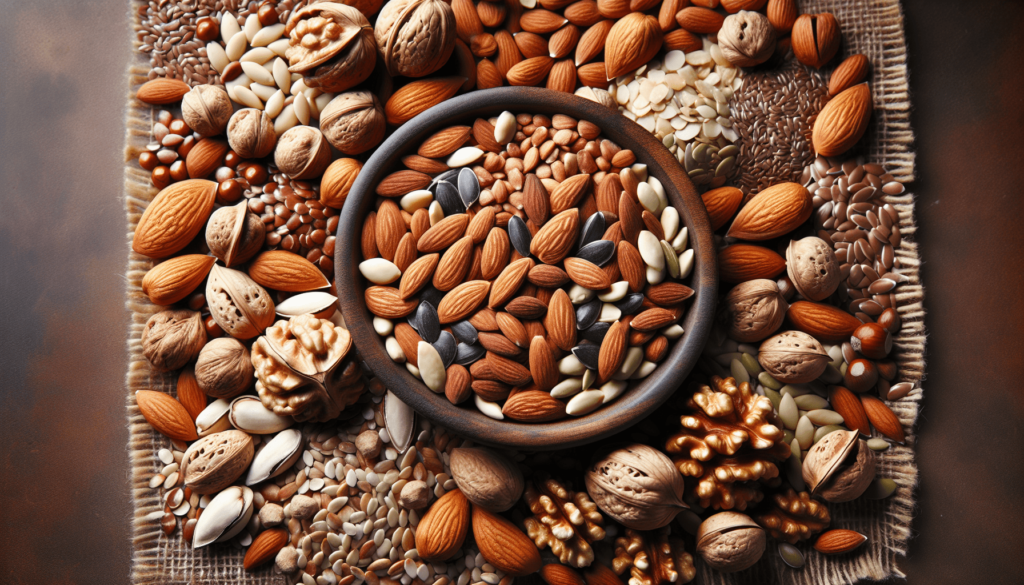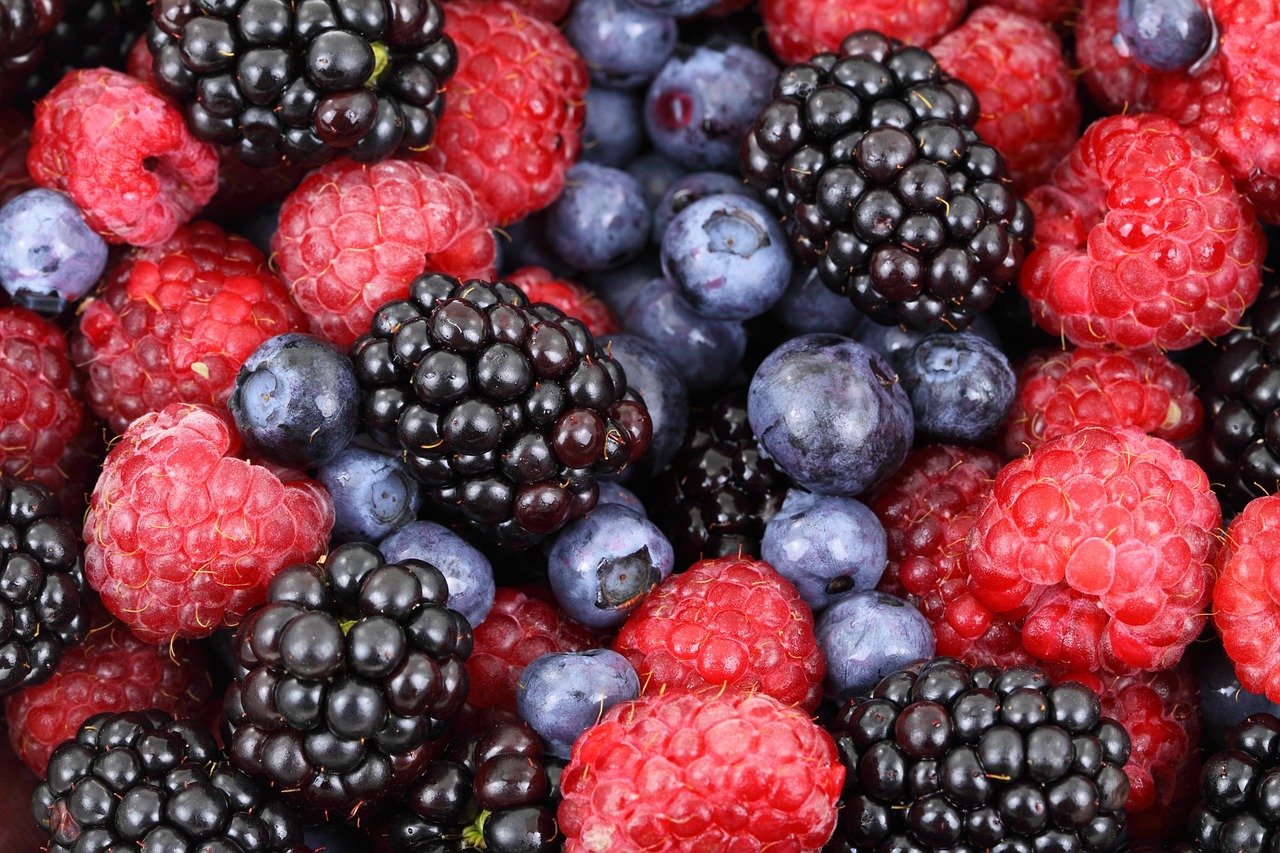Have you ever wondered how to maximize the gut health benefits of nuts and seeds? In this article, we will explore different ways to prepare these nutritious powerhouses to unlock their full potential. Discover simple and delicious techniques that will help you optimize the digestive benefits of nuts and seeds, giving you a tasty and healthy boost for your gut. So, grab a handful of nuts and let’s dive into the world of gut-healthy preparations!
Soaking Nuts and Seeds
Why soak nuts and seeds?
Soaking nuts and seeds is a simple process that can yield numerous health benefits. When nuts and seeds are soaked, it removes compounds such as phytic acid and enzyme inhibitors, which can hinder nutrient absorption and digestion. Soaking also helps to break down complex carbohydrates and proteins, making them more easily digestible. Additionally, soaking may enhance the bioavailability of nutrients present in nuts and seeds, making them easier for your body to absorb.
How to soak nuts and seeds
To soak nuts and seeds, start by placing them in a bowl and covering them with filtered water. Add a pinch of sea salt to the water, which can help neutralize enzyme inhibitors. Allow the nuts and seeds to soak for a designated period of time, depending on the type. After soaking, rinse them thoroughly with clean water to remove any residue. Soaked nuts and seeds can be enjoyed as they are or used in various recipes.
Soaking times for different nuts and seeds
Different nuts and seeds vary in their soaking times. Here are the recommended soaking times for some common varieties:
- Almonds: Soak almonds for at least 8 hours, or overnight.
- Walnuts: Soak walnuts for 4-8 hours.
- Cashews: Soak cashews for 2-4 hours.
- Pumpkin seeds: Soak pumpkin seeds for 4-8 hours.
- Chia seeds: Chia seeds do not require soaking, as they absorb water quickly on their own.
It’s important to note that soaking times may vary depending on personal preference and the desired texture of the nuts and seeds. Experimentation is key to finding the perfect texture that suits your taste.
Sprouting Nuts and Seeds
Benefits of sprouting nuts and seeds
Sprouting nuts and seeds involves germinating them, which unlocks their full nutritional potential. Sprouting increases the nutrient content of nuts and seeds, making them easier to digest and enhancing their bioavailability. Sprouting also stimulates the production of enzymes that aid in digestion. Additionally, sprouted nuts and seeds may have a reduced glycemic load, making them a healthier option for individuals monitoring their blood sugar levels.
How to sprout nuts and seeds
To sprout nuts and seeds, start by rinsing them thoroughly under running water. Place them in a jar or bowl, cover them with water, and let them soak for several hours or overnight. After soaking, drain the water and rinse the nuts and seeds again. Transfer them to a sprouting tray or sprouting bag and rinse them twice a day, making sure to drain any excess water each time. Continue this process for the recommended sprouting time.
Sprouting times for different nuts and seeds
Each variety of nut or seed has its own optimal sprouting time. Here are the general sprouting times for some common options:
- Almonds: Sprout almonds for approximately 2-3 days.
- Sunflower seeds: Sprout sunflower seeds for 2-3 days.
- Mung beans: Sprout mung beans for 2-4 days.
- Flaxseeds: Sprout flaxseeds for 1-2 days.
- Sesame seeds: Sprout sesame seeds for 1-2 days.
It’s important to monitor the sprouting process closely, as over-sprouting may lead to bitterness or spoilage. Once the nuts and seeds have sprouted, they can be enjoyed as a healthy snack or used in a variety of recipes.
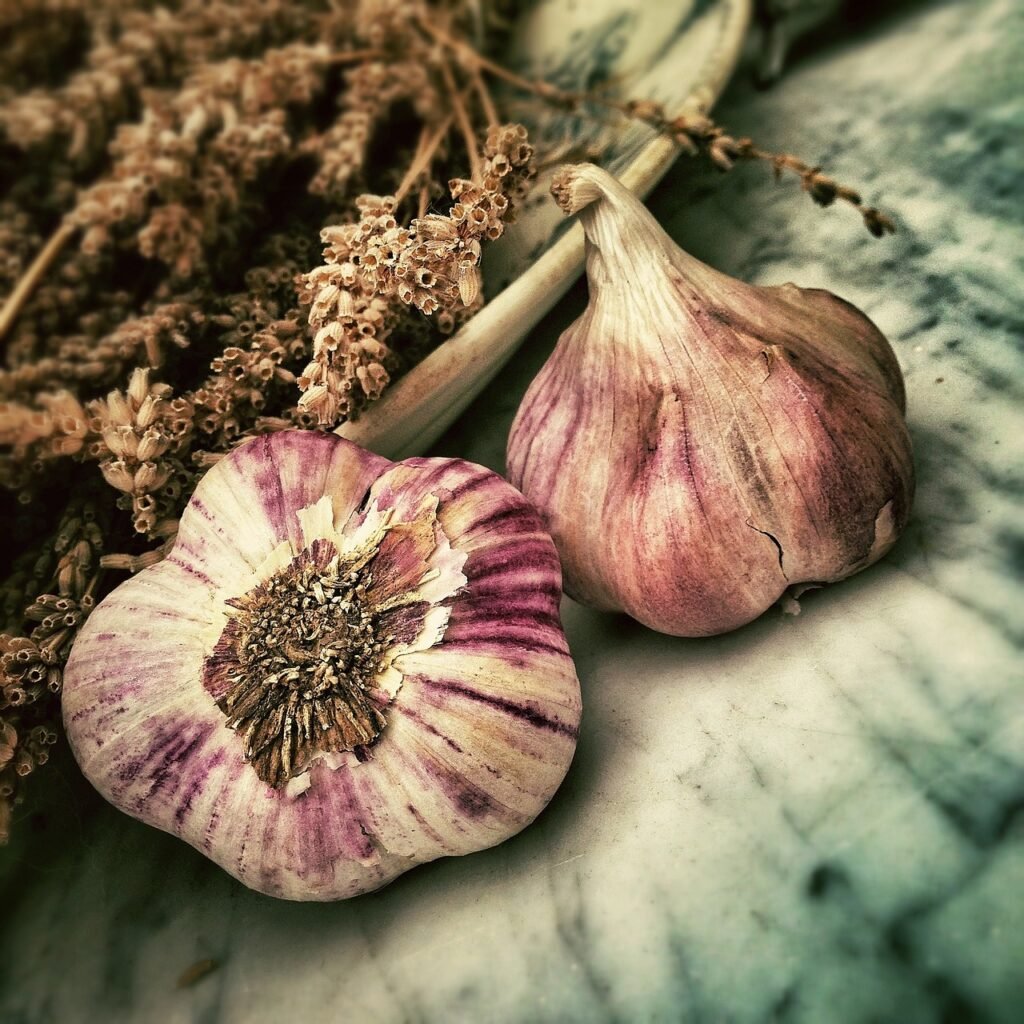
This image is property of pixabay.com.
Roasting Nuts and Seeds
Benefits of roasting nuts and seeds
Roasting nuts and seeds is a popular way to enhance their flavor and add a satisfying crunch. However, the roasting process also offers some health benefits. Roasting can help increase the antioxidant content of certain nuts and seeds, such as almonds. Additionally, roasting can improve the digestibility of nuts and seeds by breaking down certain compounds. Roasted nuts and seeds can be a delicious and nutritious addition to any diet when consumed in moderation.
How to roast nuts and seeds
To roast nuts and seeds, preheat your oven to the desired temperature (usually around 350°F or 180°C). Spread the nuts or seeds evenly on a baking sheet, ensuring they are in a single layer. Place the sheet in the oven and roast for approximately 10-15 minutes, or until they are golden brown and fragrant. Be sure to stir the nuts or seeds occasionally during the roasting process to prevent uneven browning. Once roasted, remove from the oven and allow them to cool completely before storing or consuming.
Roasting times for different nuts and seeds
The roasting times may vary depending on the type of nut or seed and personal preference. Here are some general guidelines for roasting common nuts and seeds:
- Almonds: Roast almonds for 10-15 minutes.
- Pumpkin seeds: Roast pumpkin seeds for 10-15 minutes.
- Cashews: Roast cashews for 8-10 minutes.
- Pistachios: Roast pistachios for 6-8 minutes.
- Pine nuts: Roast pine nuts for 3-5 minutes.
Keep a close eye on the nuts and seeds while they are roasting to prevent them from burning. Allow them to cool completely before enjoying their delicious roasted flavor.
Fermenting Nuts and Seeds
Benefits of fermenting nuts and seeds
Fermenting nuts and seeds is a traditional method that not only imparts a unique flavor but also increases their nutritional value. Fermentation helps to break down complex carbohydrates and proteins in nuts and seeds, making them easier to digest. It also promotes the growth of beneficial bacteria, which can enhance gut health and support a healthy immune system. Fermented nuts and seeds are a flavorful and probiotic-rich addition to any diet.
How to ferment nuts and seeds
To ferment nuts and seeds, start by soaking them in slightly salted water for the recommended soaking time. After soaking, rinse the nuts and seeds thoroughly to remove any residue. Transfer them to a clean jar or container and cover them with filtered water. Add a small amount of probiotic-rich liquid, such as sauerkraut juice or water from a previous fermentation, to kickstart the fermentation process. Seal the container and let it sit at room temperature for several days, or until it reaches the desired level of fermentation. Remember to burp the container occasionally to release any built-up gases. Once fermented, transfer the nuts and seeds to the refrigerator to slow down the fermentation process.
Fermenting times for different nuts and seeds
The fermentation times may vary depending on the type of nut or seed and personal preference. Here are some general guidelines for fermenting common nuts and seeds:
- Almonds: Ferment almonds for 2-4 days.
- Cashews: Ferment cashews for 1-3 days.
- Pecans: Ferment pecans for 2-4 days.
- Hazelnuts: Ferment hazelnuts for 2-4 days.
- Brazil nuts: Ferment brazil nuts for 2-4 days.
During the fermentation process, taste the nuts and seeds regularly to determine when they have reached the desired level of tanginess. Once fermented, they can be enjoyed as a healthy and probiotic-rich snack or used in various recipes.
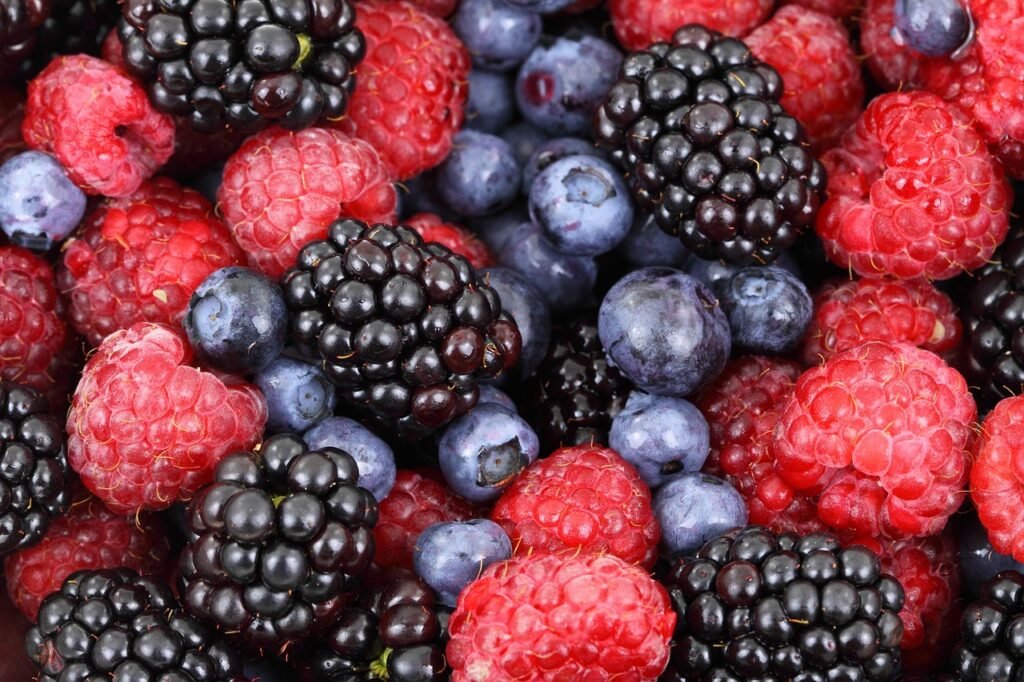
This image is property of pixabay.com.
Grinding Nuts and Seeds
Benefits of grinding nuts and seeds
Grinding nuts and seeds is an excellent way to unlock their nutritional benefits and increase their versatility in recipes. When nuts and seeds are ground, their nutrients become more easily accessible, allowing your body to absorb them efficiently. Grinding also enhances the flavor and texture of nuts and seeds, making them a valuable ingredient in both sweet and savory dishes. Adding ground nuts and seeds to your meals can be a simple and delicious way to boost their nutritional value.
How to grind nuts and seeds
To grind nuts and seeds, you will need a food processor, blender, or a dedicated nut grinder. Start by adding small batches of nuts or seeds to the chosen appliance. Pulse or blend the nuts and seeds until they reach the desired consistency, being careful not to over-process them. Continue this process until all the nuts and seeds are ground to your liking. It’s important to note that the texture of ground nuts and seeds may vary depending on the appliance and the duration of grinding. For a finer texture, grind them for a longer time, whereas a shorter duration will yield a coarser consistency.
Different ways to use ground nuts and seeds
Ground nuts and seeds offer endless possibilities in the kitchen. Here are some creative ways to incorporate them into your meals:
- Baking: Add ground nuts and seeds to baked goods like cakes, cookies, and bread for added flavor and nutrition.
- Smoothies: Sprinkle a spoonful of ground nuts and seeds into your favorite smoothie for an extra boost of protein and healthy fats.
- Salad dressings: Blend ground nuts or seeds with herbs, oils, and vinegar to create creamy and nutritious salad dressings.
- Nut butter: Keep grinding nuts or seeds until they release their natural oils and turn into a creamy nut or seed butter. Enjoy it on toast, in sandwiches, or as a dip for fruits and vegetables.
Get creative and experiment with different combinations to discover your favorite ways to use ground nuts and seeds in your meals.
Blending Nuts and Seeds
Benefits of blending nuts and seeds
Blending nuts and seeds is an easy and versatile way to incorporate their nutritional benefits into your diet. When blended, nuts and seeds become a creamy and spreadable paste, making them more accessible for consumption. Blending also helps to release the natural oils present in nuts and seeds, providing a smoother texture and enhancing the flavor. By blending nuts and seeds, you can enjoy their nutrient-rich goodness in various forms.
How to blend nuts and seeds
To blend nuts and seeds, you will need a high-speed blender or a food processor. Start by adding a small quantity of nuts or seeds to the blender or processor. Blend on high speed, scraping down the sides occasionally, until the nuts and seeds turn into a smooth and creamy paste. Depending on the appliance and the desired consistency, you may need to add a small amount of liquid, such as water or oil, to achieve the desired texture. Once blended, transfer the mixture to a clean jar or container and store it in the refrigerator for future use.
Recipes using blended nuts and seeds
Blended nuts and seeds can be used in a variety of recipes, adding depth of flavor and creaminess. Here are some delicious recipes that incorporate blended nuts and seeds:
- Nut and seed-based sauces: Blend a combination of nuts and seeds with herbs, spices, and liquids to create creamy and flavorful sauces for pasta, stir-fries, or roasted vegetables.
- Vegan cheeses: Blending soaked nuts and seeds with nutritional yeast and various seasonings can yield a tasty vegan cheese substitute.
- Energy balls: Combine blended nuts and seeds with dried fruits, sweeteners, and flavorings to create nutritious and satisfying energy balls as a healthy snack.
- Smoothie bowls: Top your favorite smoothie bowl with a dollop of blended nuts and seeds for added creaminess and a boost of nutritional goodness.
These are just a few examples of the many ways you can use blended nuts and seeds to elevate your meals and snacks.
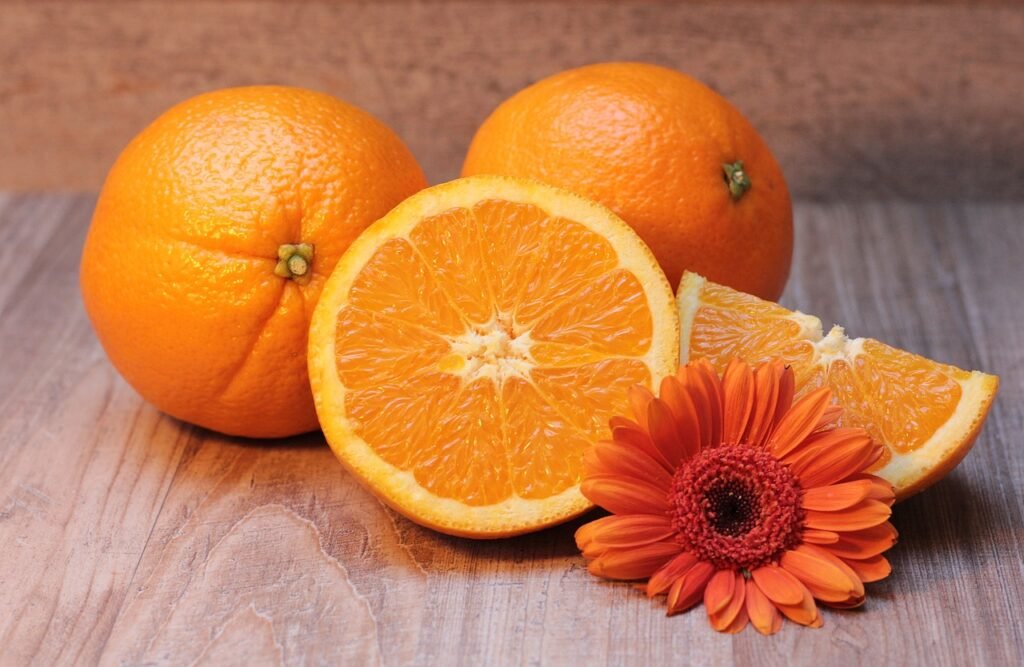
This image is property of pixabay.com.
Using Nut and Seed Butters
Benefits of nut and seed butters
Nut and seed butters are a popular and convenient way to enjoy the nutritional benefits of nuts and seeds. These spreads provide a concentrated source of healthy fats, proteins, vitamins, and minerals. Nut and seed butters are also versatile and can be used as a spread, dip, or ingredient in a variety of recipes. Incorporating nut and seed butters into your diet can contribute to overall health and well-being.
How to make nut and seed butters
Making nut and seed butters at home is easier than you might think. Here’s a simple method:
- Start with your preferred variety of nuts or seeds, such as almonds, cashews, or sunflower seeds.
- Roast the nuts or seeds in the oven or on the stovetop until they are golden brown and fragrant.
- Allow the nuts or seeds to cool slightly before transferring them to a food processor or blender.
- Process or blend the nuts or seeds on high speed, scraping down the sides occasionally, until they turn into a creamy and smooth butter. This process may take several minutes, depending on the appliance and the type of nuts or seeds used.
- Optional: Add a pinch of salt, honey, or other desired flavorings to enhance the taste of the nut or seed butter.
- Transfer the finished nut or seed butter to a clean jar or container and store it in the refrigerator for freshness and longer shelf life.
Feel free to experiment with different combinations of nuts and seeds to create unique and flavorful nut and seed butters.
Creative ways to use nut and seed butters
Nut and seed butters can elevate a variety of dishes, adding a rich and creamy element. Here are some creative ideas for using nut and seed butters:
- Spread on toast: Enjoy a classic breakfast favorite by spreading nut or seed butter on whole grain toast, topped with sliced fruits or a drizzle of honey.
- Dips and dressings: Blend nut or seed butter with lemon juice, garlic, and spices to create creamy and flavorful dips or dressings for salads, vegetables, or grain bowls.
- Sweet treats: Use nut or seed butter as a filling for homemade energy bars, cookies, or brownies, providing a delightful and nutritious twist on classic desserts.
- Smoothies and smoothie bowls: Add a spoonful of nut or seed butter to your favorite smoothie or smoothie bowl for a boost of creaminess and healthy fats.
The possibilities are endless when it comes to exploring the delicious and nutritious uses of nut and seed butters.
Adding Nuts and Seeds to Meals
Incorporating nuts and seeds into breakfast
Breakfast is a great time to incorporate nuts and seeds into your meals, as they provide a nutritious and energizing start to your day. Here are some ideas to add nuts and seeds to your breakfast:
- Overnight oats: Mix a handful of chopped nuts and seeds into your overnight oats for added crunch and a boost of protein.
- Yogurt parfait: Layer your favorite yogurt with fresh berries, nuts, and seeds for a balanced and satisfying breakfast.
- Smoothie bowls: Top your smoothie bowl with a sprinkle of nuts and seeds, adding both texture and nutritional value.
- Nut butter toast: Spread your favorite nut or seed butter on whole grain toast and top it with sliced fruits or a sprinkle of chia seeds for a simple and delicious breakfast option.
These breakfast ideas provide a nutritious and flavorful way to start your day on a healthy note.
Using nuts and seeds in salads and bowls
Nuts and seeds can bring a delightful crunch and flavor to salads and grain bowls. Here are some ways to incorporate them into your favorite salad or bowl:
- Salad toppers: Toast a handful of nuts or seeds and sprinkle them as a topping over your salad for added texture and nutrition.
- Grain bowls: Add a scoop of cooked quinoa, brown rice, or another grain of your choice to a bowl. Top it with roasted vegetables, protein of choice, and a sprinkle of nuts or seeds for a well-rounded and delicious meal.
- Salad dressings: Blend your favorite nuts or seeds with herbs, vinegar, oil, and spices to create a creamy and nutrition-packed salad dressing.
- Vegetarian protein source: Nuts and seeds can be an excellent source of plant-based protein in salads and bowls. Try adding roasted chickpeas, pumpkin seeds, or almonds as a protein-rich component.
By incorporating nuts and seeds into your salads and bowls, you can add essential nutrients, texture, and flavor to your meals.
Snack ideas with nuts and seeds
Nuts and seeds make for convenient and satisfying snacks that can be enjoyed anytime. Here are some snack ideas to incorporate nuts and seeds into your daily routine:
- Trail mix: Create your unique blend of nuts, seeds, dried fruits, and dark chocolate chips for a portable and nutritious snack.
- Energy balls: Blend nuts, seeds, dates, and other flavorful ingredients together to form bite-sized energy balls for a quick and healthy snack on the go.
- Toasted nuts: Roast a variety of nuts and toss them with your favorite spices for a crunchy and protein-packed snack.
- Nut and seed bars: Make your own bars by combining ground nuts and seeds with sweeteners and other ingredients such as dried fruits and oats. These bars can be customized to suit your preferences and can be enjoyed as a satiating snack.
Snacking on nuts and seeds can help keep you satisfied between meals while providing a nutrient-dense boost of energy.
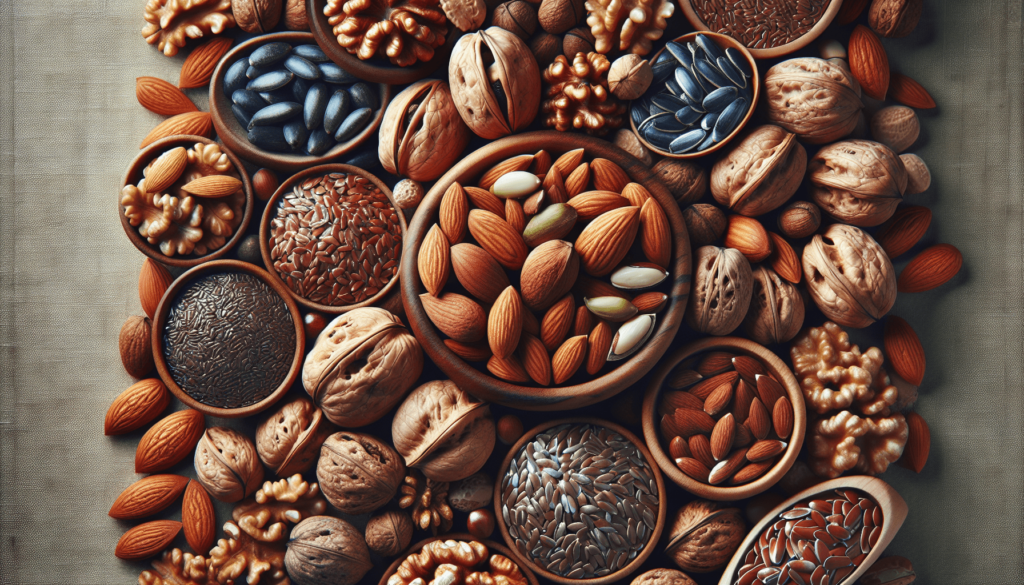
Combining Nuts and Seeds with Fermented Foods
Why combine nuts and seeds with fermented foods
Combining nuts and seeds with fermented foods offers a powerful boost to gut health. Fermented foods, such as sauerkraut, kimchi, and kefir, are rich in beneficial probiotic bacteria that support a healthy gut microbiome. When paired with nuts and seeds, which are high in fiber and various nutrients, the fermentation process breaks down the compounds present in them, making them more digestible and enhancing nutrient absorption. This combination helps promote a healthy gut, supports nutrient assimilation, and boosts overall well-being.
Recipes combining nuts/seeds and fermented foods
Here are a couple of recipes that combine nuts and seeds with fermented foods:
Fermented cashew cheese with sauerkraut:
Ingredients:
- 1 cup cashews, soaked and drained
- 1/4 cup sauerkraut
- 2 tablespoons nutritional yeast
- 1 tablespoon lemon juice
- Salt and pepper to taste
- Fresh herbs for garnish (optional)
Instructions:
- In a food processor or blender, combine soaked cashews, sauerkraut, nutritional yeast, lemon juice, salt, and pepper.
- Blend until the mixture is creamy and smooth, scraping down the sides as needed.
- Transfer the cashew cheese to a clean jar or container and let it ferment at room temperature for 24-48 hours.
- Taste the cashew cheese regularly to determine when it has reached the desired level of tanginess.
- Once fermented, garnish with fresh herbs if desired and store in the refrigerator.
- Serve the fermented cashew cheese as a spread, dip, or topping for salads and bowls.
Probiotic nut and seed granola with kefir:
Ingredients:
- 2 cups rolled oats
- 1 cup mixed nuts and seeds (e.g., almonds, walnuts, pumpkin seeds, sunflower seeds)
- 1/2 cup dried fruits (e.g., cranberries, raisins, apricots)
- 1/4 cup honey or maple syrup
- 1/4 cup melted coconut oil
- 1/4 teaspoon cinnamon
- 1/2 cup kefir
Instructions:
- Preheat the oven to 350°F (180°C) and line a baking sheet with parchment paper.
- In a large bowl, combine oats, mixed nuts and seeds, dried fruits, honey or maple syrup, melted coconut oil, and cinnamon. Mix well to ensure everything is coated.
- Spread the mixture evenly on the prepared baking sheet.
- Bake for 15-20 minutes, or until the granola is golden brown, stirring occasionally to prevent burning.
- Remove the granola from the oven and let it cool completely.
- Once cooled, stir in the kefir to provide a probiotic boost to the granola.
- Transfer the granola to an airtight container and store it at room temperature or in the refrigerator.
- Enjoy the probiotic nut and seed granola as a nutritious breakfast or snack.
By combining nuts and seeds with fermented foods, you can create delicious and gut-friendly recipes that contribute to optimal health and digestion.
Understanding Portion Sizes
Recommended portion sizes for nuts and seeds
While nuts and seeds offer numerous health benefits, it’s important to consume them in moderation due to their calorie density. Here are the recommended portion sizes for different nuts and seeds:
- Almonds: 1 ounce (about 23 almonds)
- Walnuts: 1 ounce (about 14 walnut halves)
- Cashews: 1 ounce (about 18 cashews)
- Pumpkin seeds: 1 ounce (about 85 pumpkin seeds)
- Chia seeds: 1 tablespoon (about 12 grams)
These portion sizes provide a good balance between enjoying the health benefits of nuts and seeds while avoiding excessive calorie intake.
Factors to consider when determining portion sizes
Portion sizes may vary depending on individual dietary needs and goals. Here are some factors to consider when determining your portion sizes for nuts and seeds:
- Caloric needs: Take into account your overall caloric needs and adjust the portion sizes accordingly. If you have higher energy requirements, you may be able to consume slightly larger portions of nuts and seeds.
- Personal goals: If you are aiming to lose weight or maintain a particular weight, portion control becomes even more important. Consider consulting with a registered dietitian or nutritionist to determine portion sizes that align with your goals.
- Nutrient balance: Although nuts and seeds offer numerous health benefits, they should be consumed in conjunction with a well-balanced diet that includes a variety of other foods. Ensure your portion sizes of nuts and seeds complement the overall nutrient composition of your meals and snacks.
By considering these factors, you can determine appropriate portion sizes that suit your individual needs while optimizing the health benefits of nuts and seeds.
Balancing nuts and seeds with other foods in the diet
While nuts and seeds are nutrient-dense, they should be balanced with other food groups to ensure a well-rounded diet. Here are some tips for incorporating nuts and seeds while maintaining a balanced intake:
- Variety: Incorporate a variety of nuts and seeds into your diet to benefit from their unique nutrient profiles. Different nuts and seeds offer different combinations of healthy fats, proteins, vitamins, and minerals.
- Proportions: As a general guideline, aim to make nuts and seeds about 10-15% of your overall dietary fat intake. This allows for a balanced distribution of fats from different sources.
- Pairing with fruits and vegetables: Combine nuts and seeds with fruits and vegetables to create well-balanced snacks or meals. The fiber and water content in fruits and vegetables can help offset the calorie density of nuts and seeds.
- Moderation: While nuts and seeds offer numerous health benefits, consuming excessive amounts can lead to excessive calorie intake. Remember to enjoy them in moderation and consider portion sizes when incorporating them into your meals and snacks.
By maintaining a balanced approach and considering portion sizes, you can enjoy the nutritional benefits of nuts and seeds while keeping your overall diet well-rounded and nutritious.
